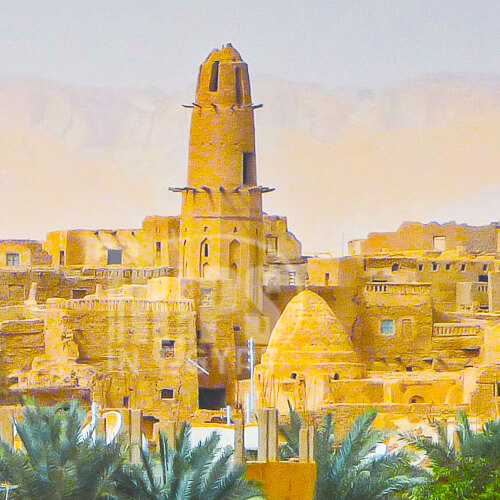No other nation in the world says ‘Welcome’ as often as the Egyptians, and every time, they mean it. While the ancient civilization of Egypt continues to amaze, contemporary Egyptians are equally remarkable.
AL Mezauwaqa
Exploring the Mysteries of Al-Mezauwaqa Tombs: A Legacy Carved in Stone
Nestled within the ancient landscapes of Egypt, the Al-Mezauwaqa tombs, aptly named ‘The Decorated Hill’, form a crucial part of the Amheida cemeteries. This fascinating necropolis, adorned with ridges and hills shaped from soft stone, has been a silent witness to history since the first and second centuries AD, during the Roman occupation of Egypt. Here, approximately 300 tombs were meticulously carved out of the pre-existing geological formations, each telling a story from a bygone era.
The design of these tombs, predominantly traditional Egyptian in style, suggests a deep respect for the ancient customs and artistic expressions of the region. Despite the Roman influence, the essence of Egyptian funeral artistry remains profoundly evident in the architecture and decorations.
Among these eternal abodes, two tombs stand out for their extraordinary artistry – those belonging to Petosiris and Petubastis. The tombs have not fully revealed their secrets yet, as many remain unexcavated, shrouded in the mystery of their occupants’ identities. However, the vibrant and lively murals adorning the tombs of Petosiris and Petubastis offer a glimpse into the rich tapestry of cultural and artistic fusion of the time.
Padiosir Petosiris’ tomb, believed to have been constructed in the early second century AD, features a unique double-chambered design. In contrast, the tomb of Ptubastis boasts a single chamber with ledges intended for mummies. Inside, the mural of Petubastis dons a pink Roman-style cloak, surrounded by various symbolic elements. The ceiling of the chapel is adorned with a Zodiac design, a hallmark of the first century AD. Notably, the imagery includes Osiris weighing the heart and Isis performing a libation, an homage to ancient Egyptian religious traditions.
These tombs also showcase the quintessential funeral art of the New Kingdom, with depictions of stars, constellations, scarabs, birds, animals, and the god Horus. The artwork is a testament to the enduring influence of Egyptian iconography in the region.
While it remains uncertain if mummies were interred in these particular tombs, other nearby graves have yielded exhumations, albeit less ornate. The carvings and inscriptions found on these tombs provide invaluable insights into the spiritual beliefs and practices of the Romans in Dakhla.
Al-Mezauwaqa has long captured the imagination of the public and scholars alike as a treasure trove of invaluable relics. The tombs were first photographed by Herbert Winlock in 1908, and their significance was rediscovered by Ahmed Fakhry in 1972, leading to restoration efforts for the deteriorating murals.
However, due to structural concerns, notably the precarious state of the roofs, authorities closed the tombs of Petosiris and Petubastis in 1998. Despite the completion of reconstruction work, these ancient wonders remain off-limits to the public, preserving their integrity for future generations to explore and understand.
Al-Mezauwaqa tombs, with their rich tapestry of history and art, continue to fascinate and mystify, standing as a timeless testament to the cultural and artistic confluence that has shaped Egypt’s unique heritage.
Created On March 18, 2020
Updated On Aug , 2024
Dakhla Oasis Travel Guide



